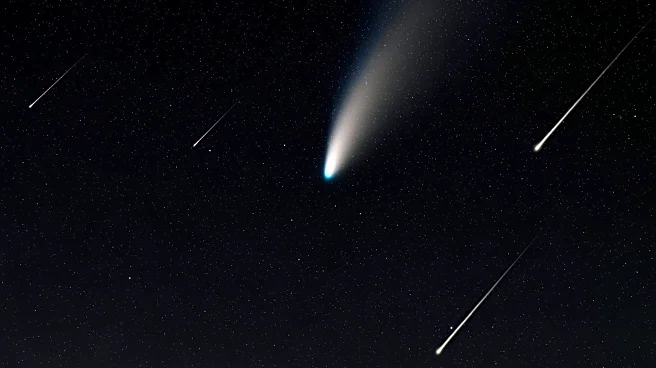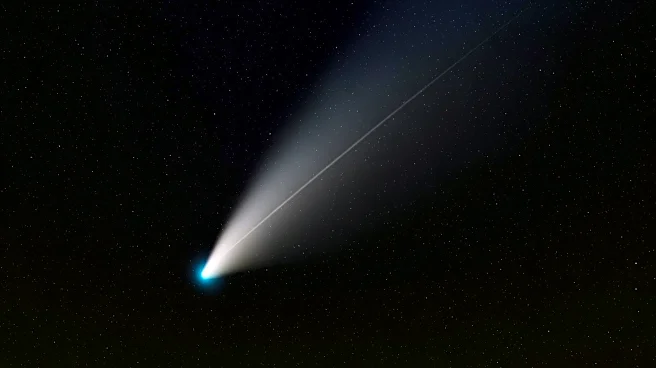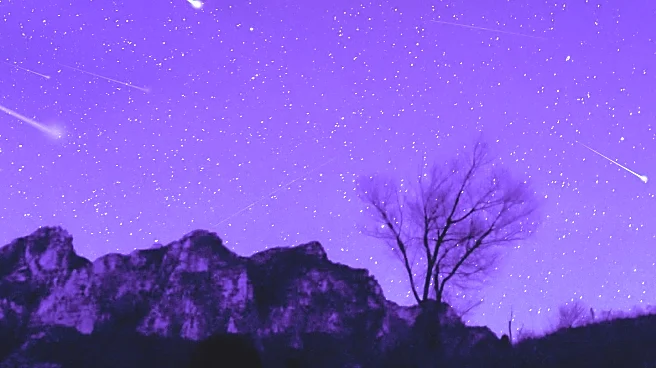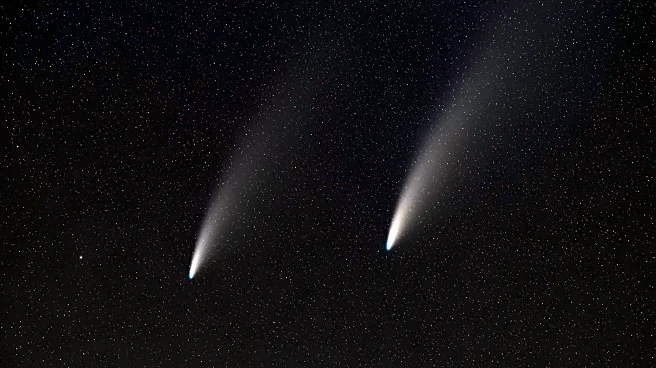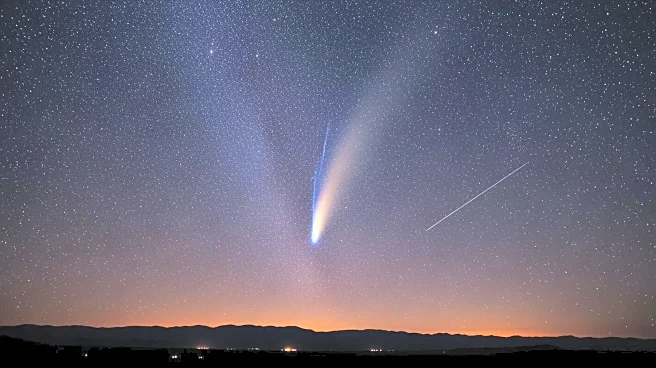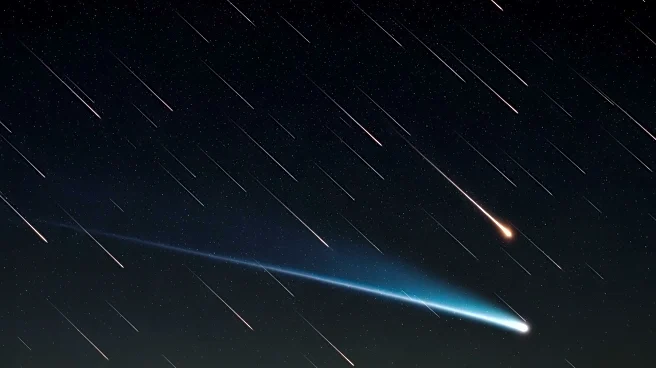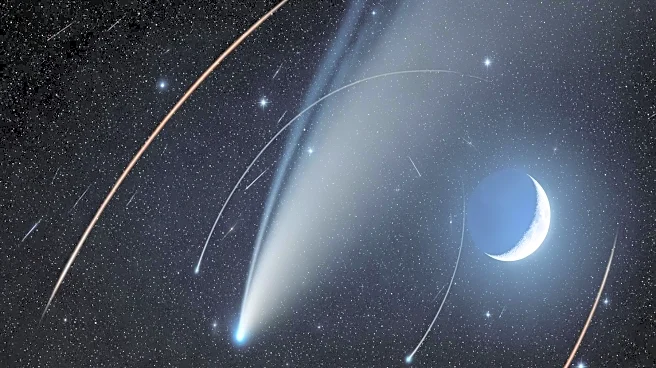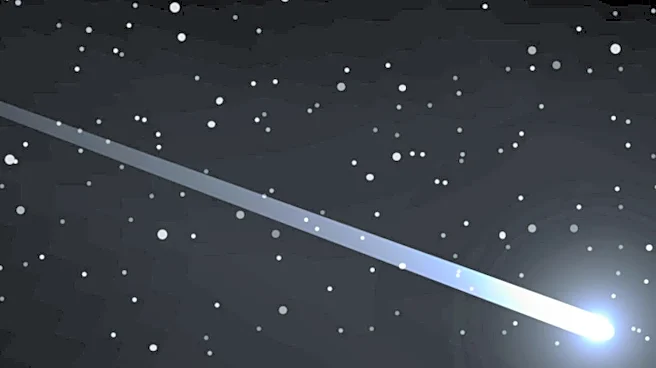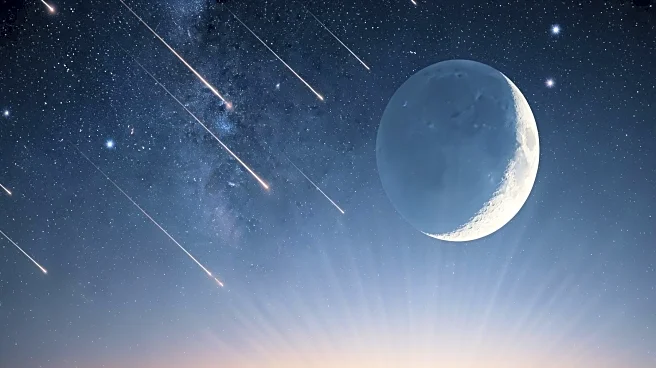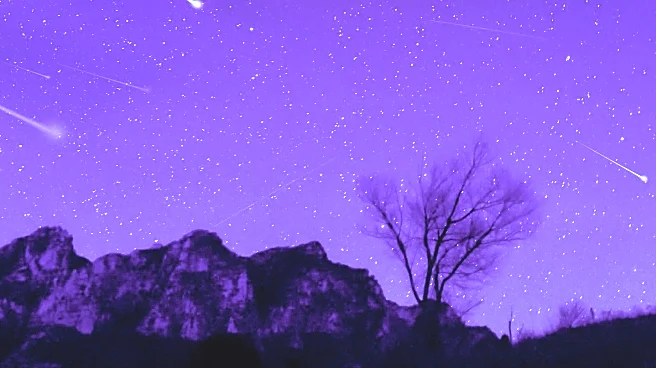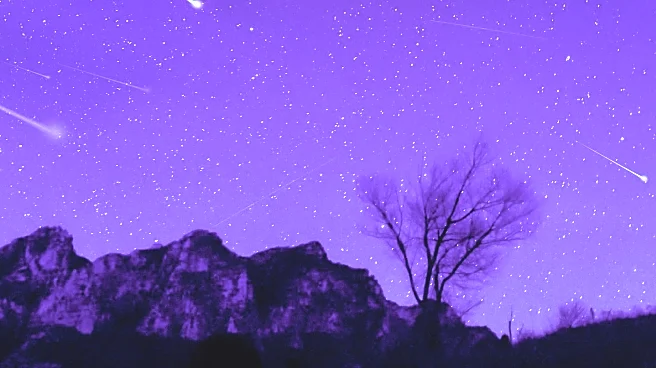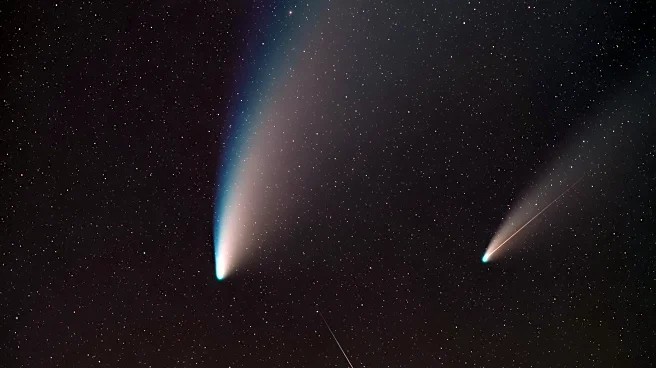What's Happening?
On October 21, 2025, skywatchers are treated to a celestial event as the Orionid meteor shower peaks, coinciding with a New Moon phase. This alignment is expected to produce approximately 20 meteors per hour, with the radiant located near Betelgeuse in the constellation
Orion. Additionally, Comet C/2025 A6, known as Comet Lemmon, reaches its closest approach to Earth at 28.6 million miles, appearing as a 5th-magnitude object in the constellation Boötes. The event is further highlighted by a close conjunction of Mercury and Mars, visible in the evening sky, and a transit of Titan across Saturn's disk, which may include a rare shadow graze near Saturn's north pole.
Why It's Important?
This astronomical event provides a unique opportunity for both amateur and professional astronomers to observe multiple celestial phenomena simultaneously. The Orionid meteor shower, enhanced by the absence of moonlight, offers a clear view of meteors, which are remnants of Halley's Comet. Comet Lemmon's proximity allows for detailed observation and study, contributing to our understanding of cometary behavior and composition. The conjunction of Mercury and Mars, along with Titan's transit, adds to the richness of the event, offering insights into planetary alignments and moon transits. These observations can enhance public interest in astronomy and inspire educational initiatives.
What's Next?
Observers are encouraged to take advantage of the clear skies and minimal light pollution to view these events. The best time to observe the Orionids is in the early morning hours before sunrise, while Comet Lemmon can be seen both in the morning and evening skies. The transit of Titan across Saturn is best viewed from the Eastern and Central time zones, with the potential shadow graze occurring towards the end of the transit. These events may prompt further studies and observations, contributing to ongoing research in planetary science and astronomy.
Beyond the Headlines
The convergence of these celestial events highlights the dynamic nature of our solar system and the importance of continued observation and study. Such events can foster a greater appreciation for the complexities of space and encourage public engagement with science. They also serve as a reminder of the interconnectedness of celestial bodies and the potential for new discoveries in the field of astronomy.
